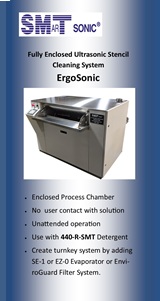|

|
|
| Ask the Experts | |||||||
|
|||||||
|
January 19, 2009 - Updated January 19, 2009 - Originally Posted DI Resistivity for Wafer Dicing and CleaningWhat should DI water resistivity be for wafer dicing and cleaning? What might be the effect of lower DI resistivity on the performance of the wafer? N.P. |
|||||||
| Expert Panel Responses | |||||||
President/Senior Technical Consultant Foresite Mr. Munson, President and Founder of Foresite, has extensive electronics industry experience applying Ion Chromatography analytical techniques to a wide spectrum of manufacturing applications.
I did some research found out that "For front end applications like this usually companies are working with a conductivity level of maximum 1 uS (minimum of 1 MegOhm). The rinsing performance itself will be not significantly influenced by a higher conductivity or lower resistivity but the ions might cause some reliability and functionality issues on the chip."
Application Technology Manager Zestron America Mr. Tosun has published numerous technical articles. As an active member of the SMTA and IPC organizations, Mr. Tosun has presented a variety of papers and studies on topics such as "Lead-Free Cleaning" and "Climatic Reliability".
Reader Comment
The current specification for DI at the dicing process is 0.5 Mohms to 2 Mohms. We try to stay close to 1 Mohm. The theory is that the higher the DI resistance the less capability to properly ground the saw blade and therefore a higher build up of charges at the spinning blade that can lead to ESD events. A too lower resistance is also and indicator of impurities on the water that can cause corrosion on metal pads on top of the wafer.
Ivan Lara, International Rectifier, Mexico
Reader Comment
By using CO2 reionized DI water, it will prevent any static related risks and also avoid any contaminants since CO2 will leave no residue after drying.
Fei Xu, Liquid Intelligent Control System, Inc., USA
|
|||||||
| Submit A Comment | |||||||
|
Comments are reviewed prior to posting. You must include your full name to have your comments posted. We will not post your email address. |
|
Free Newsletter Subscription
Circuitnet is built for professionals who bear the responsibility of looking ahead, imagining the future, and preparing for it. Insert Your Email Address |
|

|




